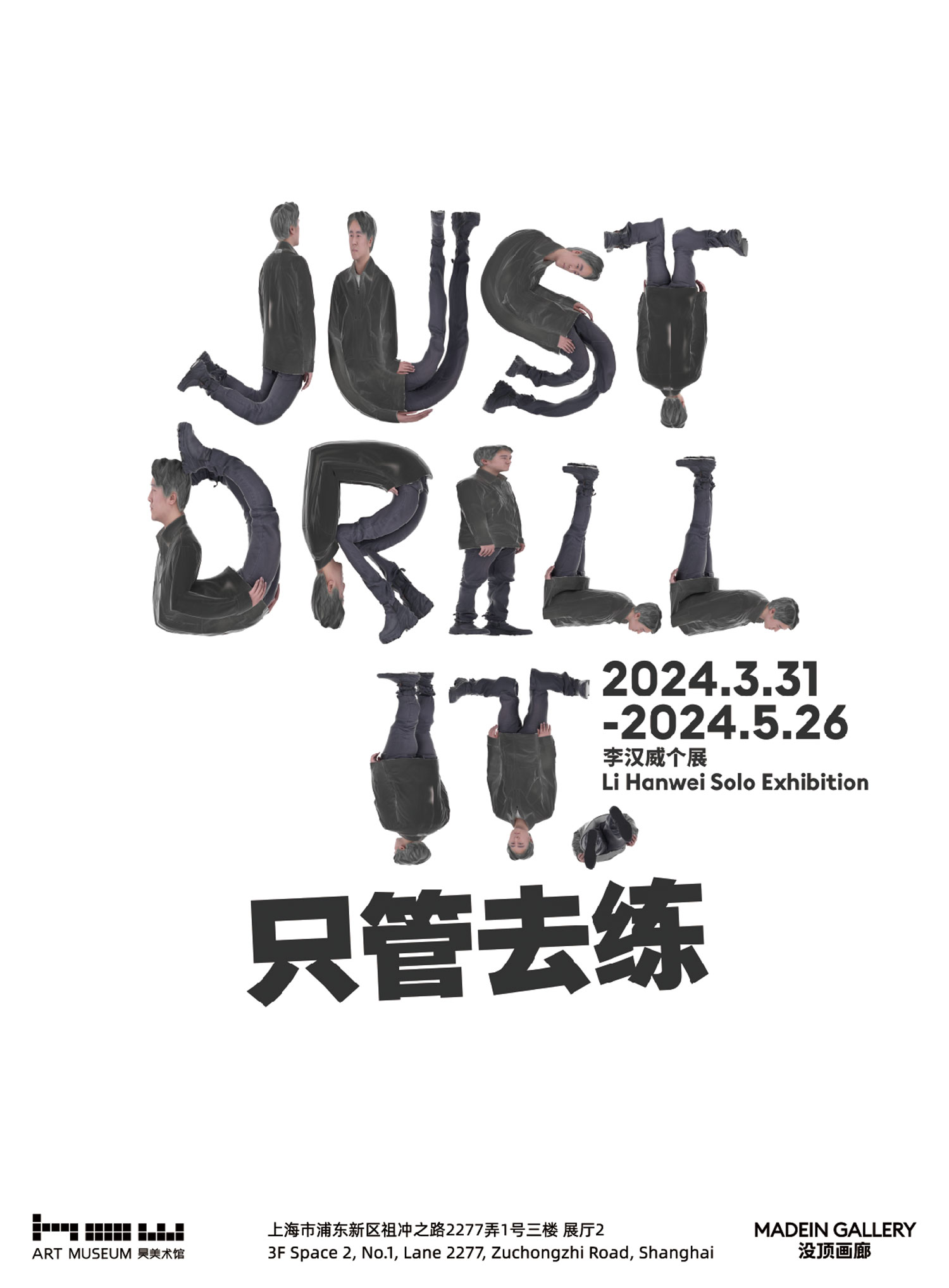展期 Period:
2024.3.31—2024.5.26
艺术家 Artist:
支持 Support:
没顶画廊 Madein Gallery
地点 Venue:
前言 Foreword:
一直以来,信息--作为文化的载体,其流动与转化的方式--是我持续感兴趣并关注的主题。其中工具的实用性、技术的进化、内容的操控力都是我创作的灵感与出发点。三者互相关联,又相互转化。我多次试图在现实世界的物质性层面上展开工作,但往往不能,因为在我看来这真的效率低下,而这种“低效率”让我感到深深地不安。相比起来,我更喜欢对非物质进行操控,因为它总是实时且可逆的。感谢游戏制作与广告特效的工具系统以及中国国内全面的供应链系统,让我这样的工作方式成为可能。
总体来讲,本次展览是我对图像传播思考后尝试的结果。我的手机中储存着大量图像,不管是否是我自己拍摄的,是否与我有关。每天巨量的网络使用时间让我反而对从未见过的事物异常清晰:通过大数据的推送,信息总是会把过滤后的事实呈现在眼前;总会有一种引导,但我们知道这只是表层的现象.这促使我非常希望能够描绘出图像--信息原本的形象。
“练习”采用了展示虚拟世界的常见形式--屏幕与墙纸。其特殊的形式感,让我得以将重心完全集中在虚拟空间。我会先用画笔和手指在现实中进行最基础的涂抹笔触,甚至直接从他人那里截取笔触,然后将它们拍摄下来进入cinema4D中继续进行创作。在这个过程中,我快速又无意识地完成每一张画面,回退,修改,保存满意的结果。我对绘画方法论现有的框架--在这里,原本的绘画的身体姿势被仅有的手腕操控鼠标的动作所取代,又比如,通过在软件中反复绘制贴图的动作进行画面内容的演变,亦或利用“相机系统”呈现绘画的空间感等等--和观看的逻辑--3D软件界面帮助我们克服了肉眼的观看限制--进行扩展。
“目击”同样将3D打印机器本身的工具逻辑视作一种形式感来源,其尺寸的限制要求只能在有限立方体内完成打印,这被迫产生了模块化的效果。利用手机的深度摄像头功能,我首先将图像的每个像素点位移,挤压出一个虚拟的厚度;确认好模型之后,将其发送至3D打印农场进行批量化打印,此过程会产生一种地质般的视觉效果,每一层记录了图像中的像素点的信息位置。整个过程中,我一直远程通过app实时传输记录的数据信息,控制着打印的纹理、线条,甚至是偶然的缺陷也被保留下来。
文 / 李汉威
Throughout, information—as a carrier of culture, its flow and transformation has been my continuous interest and focus. The utility of tools, the evolution of technology, and the manipulative power of content are all inspiration and origin for my creations. These three elements are interrelated yet transformative. For a while, I’ve attempted multiple times to work on material level of the real world yet often found it inefficient, which has deeply distressed me. In comparison, I prefer to manipulate the immaterial for it is always real-time and reversible. Thanks to the instrument system of game production and advertisement after effects, as well as the comprehensive supply chain system in China, this manner of working has become possible for me.
Overall, this exhibition is the result of my attempt to reflect on image communication. My phone stores a large number of images, regardless of whether they are taken by myself or at any rate related to me. The massive amount of time spent on the internet every day makes me particularly clear about things I have never seen: through the push of big data, information has been always presenting filtered facts in front of me. There is always a guidance, though we know it's only superficial phenomenon, which makes me extremely eager to depict images—the original form of information.
Exercises series adopts common forms of showcasing the virtual world—screens and wallpaper. Its unique sense of form allows me to focus entirely on the virtual space. Usually, I start by making the most basic brush strokes with brushes and fingers in reality, even directly taking brush strokes from others, and photograph them to continue working in Cinema 4D. In this process, I finish each frame quickly and unconsciously, then retreat, modify, and save satisfactory results. I expand on existing frameworks of painting methodologies. 3D software interfaces have helped us overcome the limitations of visual perception while shifting the logic of viewing. Here, the physical posture of traditional painting is replaced by the action of controlling the mouse with only the wrist. For example, the evolution of the picture content by repeatedly drawing textures in the software, or using the "camera system" to present the spatial sense of painting, and so on.
Likewise, Witness series regards the instrumental logic of 3D as a source for sense of form. The size restrictions of the printer require printing to be completed within a limited cubic space, which forces a modular effect. Utilizing the depth-sensing functionality of the smartphone's camera, I firstly displace each pixel of the image, squeezing out a virtual thickness. Once the model is confirmed, it is sent to a 3D printing farm for batch printing, which produces a geological visual effect, with each layer recording the information position of the pixels in the image. Throughout the process, I have been remotely transmitting recorded data in real time through the app, controlling the texture, lines of the print, and even retaining accidental defects.
Text / Li Hanwei

